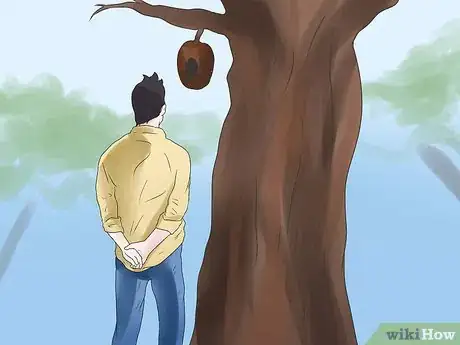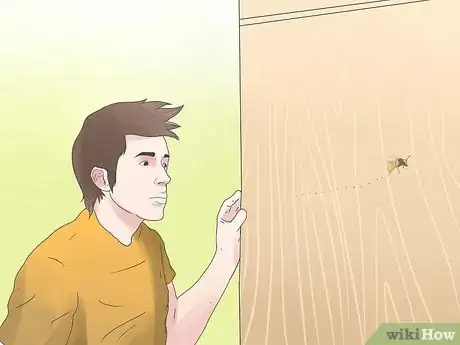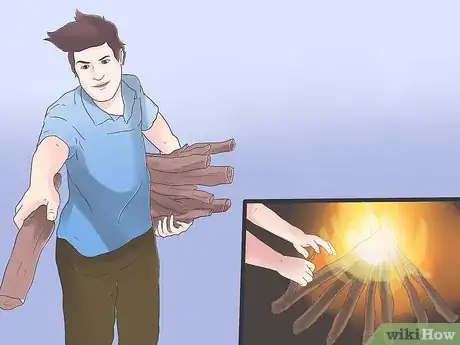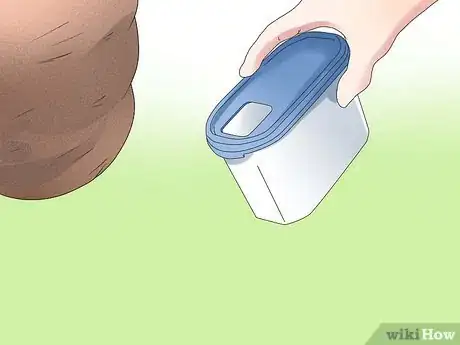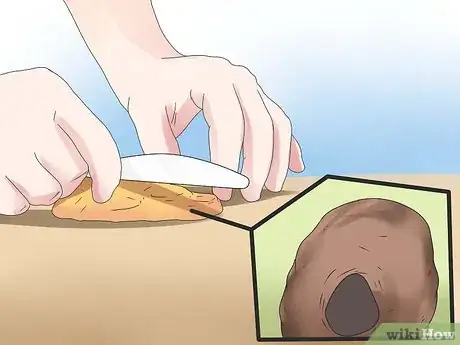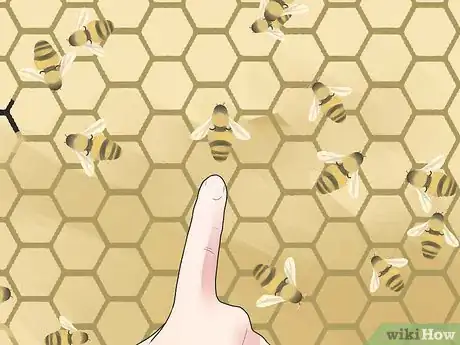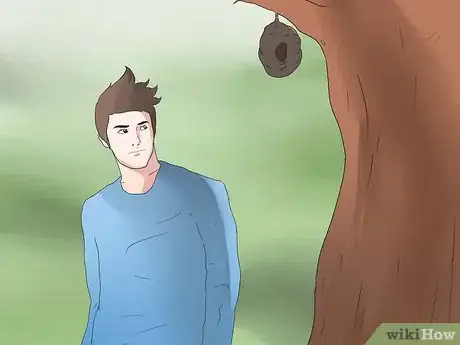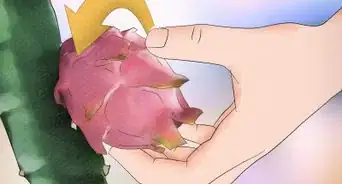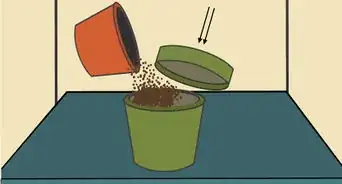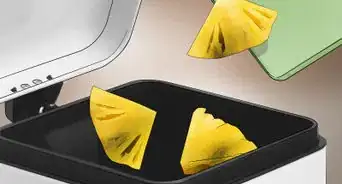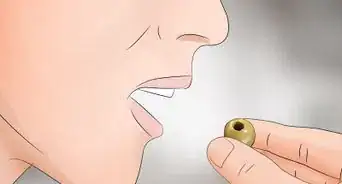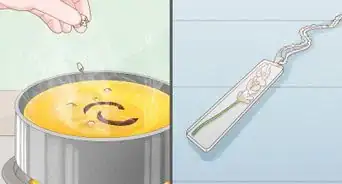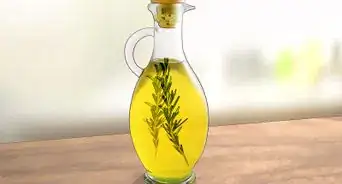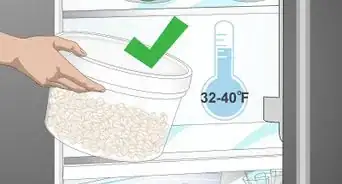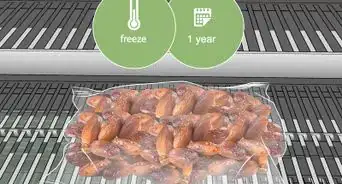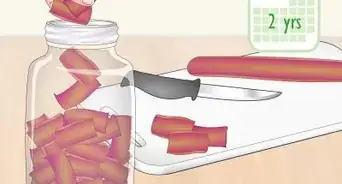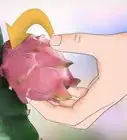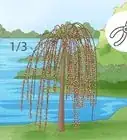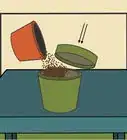X
wikiHow is a “wiki,” similar to Wikipedia, which means that many of our articles are co-written by multiple authors. To create this article, 16 people, some anonymous, worked to edit and improve it over time.
This article has been viewed 103,565 times.
Learn more...
If you find a beehive in the wild, you might want some of the honey. But those bees and their stings are not going to let you have it so easily. This article will help you to obtain some wild honey successfully.
Steps
-
1Have a good shower before you go to get the honey and wear completely clean clothes. Don´t smell of perspiration. Bees don´t like dirtiness and will sting you under your arms if your are dirty.[citation needed]
-
2Make sure that your target is actually a honeybee hive. Not everything that buzzes leads to honey. Wasps and yellow jackets make nests, but they do not produce any honey. Also, there are solitary species of bees which don't make honey.Advertisement
-
3Follow the bees to their home. If you see a hole in a tree or log where there are lots of bees going in and out, you've found their hive.
-
4Burn some plants or wood to make smoke. (Pine needles are generally good for this purpose.)
-
5Put the smoking material into a container you can carry, and take it over to the hive. Waft the smoke into the hole. Smoke makes the bees expect a fire, which makes them concerned about their honey. They gorge themselves over the uncapped honey, which makes them less likely to fly around and sting you.
-
6Working slowly and carefully, cut a piece of the honeycomb with a sharp knife. Try to avoid getting comb that contains larvae. Don't try to take the whole hive, just take a piece.
-
7Try to spot which bee is the queen. She is slightly bigger than the others and probably won't fly. She may also have a greenish-blue spot on her back. Don't meddle with the queen, because the other bees will try to stay wherever she is.
-
8Move away with your honeycomb. Then leave the bees alone.
Advertisement
Community Q&A
-
QuestionDo bees hibernate in winter in Missouri? If so, when?
 Community AnswerBees do not hibernate; instead, they stay in the hive during winter, when it is too cold for them outside. Bees will stop being active outside before the temperature reaches freezing.
Community AnswerBees do not hibernate; instead, they stay in the hive during winter, when it is too cold for them outside. Bees will stop being active outside before the temperature reaches freezing. -
QuestionWhat time of year is best to gather the honey, and how much should I take?
 Mark O'GuinCommunity AnswerEarly to mid summer in the south is our first harvest. In good years another harvest may be taken in the fall. You take the excess honey, but always leave them ample supplies for their use. At times different hives may yield varying amounts, from only a few frames filled (that can be spared from bee needs) to multiple supers full of honey. I have experienced annual yields from certain hives of 120 pounds or more harvested to nothing at all from others.
Mark O'GuinCommunity AnswerEarly to mid summer in the south is our first harvest. In good years another harvest may be taken in the fall. You take the excess honey, but always leave them ample supplies for their use. At times different hives may yield varying amounts, from only a few frames filled (that can be spared from bee needs) to multiple supers full of honey. I have experienced annual yields from certain hives of 120 pounds or more harvested to nothing at all from others. -
QuestionWhy would I want to locate the queen unless I wanted to make a new nest and column?
 Mark O'GuinCommunity AnswerIt's always good to locate the queen when working your hives. You may injure the queen while working the frames if you are not sure where she is, she will often move to get away from you when handling the frames. Watch for excessive swarm cells on the bottom of the frames, you may have an overcrowded hive and need to reverse the hive body supers, add hive bodies and/or honey supers, there could be a failing queen or some other stress causing them to prepare to swarm or requeen themselves. You should find freshly-laid eggs in a number of cells in the hive or you have a problem, they may have requeened themselves already.
Mark O'GuinCommunity AnswerIt's always good to locate the queen when working your hives. You may injure the queen while working the frames if you are not sure where she is, she will often move to get away from you when handling the frames. Watch for excessive swarm cells on the bottom of the frames, you may have an overcrowded hive and need to reverse the hive body supers, add hive bodies and/or honey supers, there could be a failing queen or some other stress causing them to prepare to swarm or requeen themselves. You should find freshly-laid eggs in a number of cells in the hive or you have a problem, they may have requeened themselves already.
Advertisement
Warnings
- Differentiate between killer-bees and bees.⧼thumbs_response⧽
- Never attempt this without wearing a protective veil. Any bee stings to the head are dangerous and very painful. The face is vulnerable and usually the first target when bees become upset.⧼thumbs_response⧽
- Do not try this if you are allergic to insect venom. A life-threatening immune reaction is not worth a few ounces of honey.⧼thumbs_response⧽
- If you are stung many times you can die even if you are not allergic to bees. Be very careful.⧼thumbs_response⧽
Advertisement
About This Article
Advertisement

